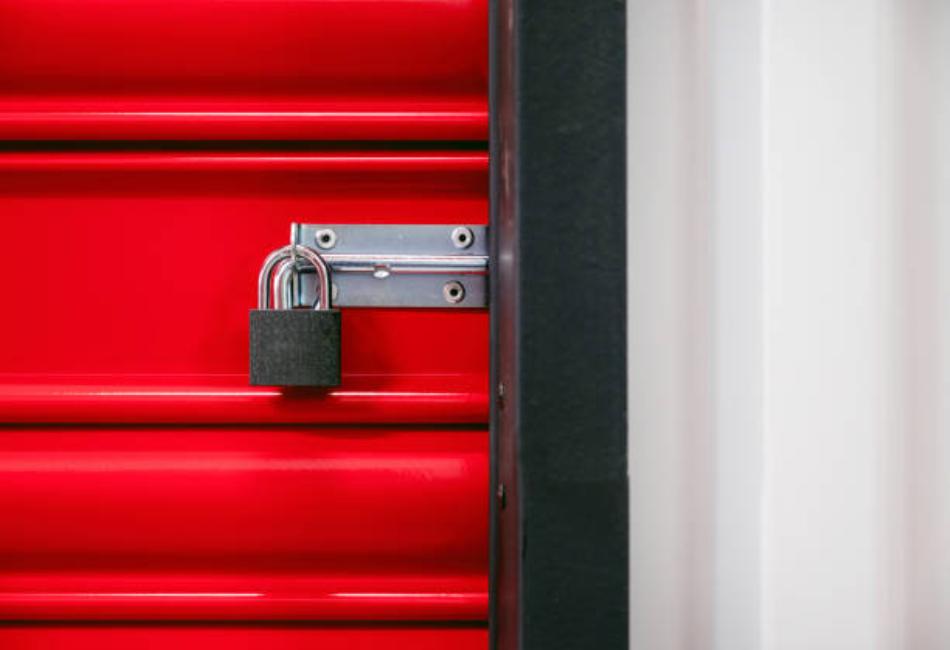The ever-evolving nature of the industry makes the balance between security and usability paramount. Given that facilities may contain sensitive materials, advanced machinery, and crucial information, there is an absolute need for sophisticated and user-friendly door locks. Modern industrial lock and hardware solutions illustrate the juxtaposition between effective security and operational efficiency, fulfilling this need.
From production facilities and cleanrooms to energy substations and cabinets holding medical equipment, the usability of industrial door locks is no longer an afterthought. These locks must provide comprehensive functionality and effortlessly integrate with processes. Programmable access, ergonomic usability, and enhanced functionality make these solutions a vital part of the specialty hardware ecosystem in the B2B sphere.
The Evolving Role of Door Locks in Industrial Environments
The days of industrial locks being mere mechanical devices with one key are long gone. The functionality of industrial door locks has had to evolve to ensure they integrate seamlessly with modern facilities, meaning they have to offer smart capabilities, biometrics, and real-time surveillance.
Pharmaceuticals, electronics, energy, and logistics are industries that require specific locking systems that provide security and promote workflow efficiency. A perfect example would be technicians unable to be delayed during maintenance due to outdated locking systems.
Modern industrial lock and hardware systems strive to achieve uncompromised security and quick usability at the same time by incorporating locks which enable unrestrained movement to facilities while enabling streamlined operations. In relation to industrial operations, specialty hardware is considered a specific and advanced equipment that ensures a facility’s critical security needs paramount increasing security and facility protection.
Key Features That Define Modern Industrial Door Locks
Meeting modern regulatory and application requirements, industrial door locks are equipped with a variety of features tailored to different usability and security needs.
Electronic Access Control
Many industrial sectors are now adopting electronic locks owing to their flexibility and programmability. These locks are more helpful when incorporated into access management systems as administrators may perform the functions of:
- Role-based permissions assignments
- Time-bound access permissions settings
- Usage logs and audit trails monitoring
- Whitelisting and blacklisting access
Control and accountability are improved, especially in multi-user and high security areas.
Ergonomics and Usability of Design
Modern locks are especially aimed for the convenience of the user. Levers and cam locks or even push to close locks streamline and make the procedures considerably easier. These ensure that employees are able to accomplish tasks without noticeable effort especially in volume heavy tasks like production and distribution centers.
Implementing functionality and integration of user-friendly features does not lead to breach of security and safety protocols. In fact, using these features enhances safety compliance and reduces the chances of human lapses and negligence.
Dependable Lifecycle of Environments
Specialty hardware today is designed to endure damaging conditions. Locks with the following features are now widely in the market and stretchable to:
- Extreme highs or lows of temperatures.
- Humidity levels.
- Corrosive chemicals.
- Dust and vibration.
All of these factors contribute to the consistent dependability in rough manufacturing, marine or mining environments.
Locks Without Errors and Prevention of Tampering
Some sophisticated locks now come with options for fail-safes, or locks that will fail soft or become soft locked and locked or unlocked automatically based on a power simulation. For example, the lock changes based on the power supply of the facility. In addition to this, sensors can also monitor tampering or forced entry and can trigger alarms with the central security systems.
Meeting Security Standards in Regulated Industries
The protection of assets entails more than just security—it also means meeting compliance. In certain industries, there are compliance rules that require security and safety procedures to be followed, such as the data access and information privacy policies.
Food and Drugs
These industries have stringent hygiene and batch tracking systems in place. Their locking systems must enable entrance that is authorized, while simultaneously avoiding contamination or tampering of any sort. Audit and traceability requirements are essential, and smart locks can assist in tracking who accessed what part of the system and at what time.
Electronics and Data Centers
These industries also have stringent rules regarding the physical proximity of sensitive digital systems like servers and power panels. Here, biometric and RFID locks enable these locations to be accessed by authorized personnel only. Like all compliance requirements, logs of access to these sensitive areas must be kept and transferred when necessary.
Utility and Energy
These are part of the national infrastructure. Electric utility control and supply stations have the potential to be a restricted access and monitored security area, as any invasion to these areas can lead to major disruption of service and unsafe conditions. Multi-layered access control industrial lock and hardware with integrated video surveillance address the need of these critical areas.
The need for compliance is extraordinarily high for many businesses to maintain operational flow with reduced legal risk, and specialty hardware provides physical security to assist in compliance.
Choosing Your Business Security Locking Systems Wisely
Selecting an industrial door lock does not mean going for the most rugged or sophisticated device.Current market conditions indicate it is more about solving problems. B2B buyers should evaluate the following:
Type of Access Needed
Is it such a Forensic Signature and entitlement driven lock and should it permit keyed entry, a personal identification number (PIN), or biometrics? Factor in the user and their frequency of usage while awarding access.
Level of Security Required
A basic mechanical lock should suffice for low risk areas while for high security areas it is prudent to consider electronic systems with at least a dual verification or remote control system.
Environmental Conditions
Assess the working conditions of the lock. Is the lock in hot, cold, wet or dusty environments? That lock should be made of materials and seal ratings to withstand those conditions.
Frequency of Use
These locks should be easy to operate, fast, and ergonomic. Systems with smooth and easy to engage mechanisms are easy to operate, reduce fatigue, and wear on the system.
Integration with Existing Systems
Monitor all access control or locks for coherence to existing systems. Maintenance and supervision of users is easy with unified systems or platforms.
All businesses require security, access control and efficient operation. Adopting a custom approach greatly augments finding the optimal organizational flow.
Real Life Examples: Merging Security and Practicality
To better understand these concepts within the context of industrial frameworks, consider these examples:
Medical Laboratory Cleanroom Cabinets
The locking mechanisms must allow access with gloves to prevent the spread of contaminants while unauthorized access is restricted. Cam locks with RFID and smooth surfaces fulfill hygiene and compliance standards.
Electrical Cabinets in Factories
Charged electrical panels must be secured with locks that prevent access and signal if the panel is sealed. There are systems that auto-lock when power is supplied and, if left unlocked, issue warnings.
Automated Delivery Lockers in Logistics Databases
Employees access large lockers containing packages for withdrawal and deposit. In this case, push-to-close locks that can be accessed via PIN code or badges facilitate faster.
The examples above illustrate intelligent lock systems tailored to specific use cases that strike a balance between usability, safety, and productivity.
Summary: Innovative Specialized Locks and Hardware
Contemporary industrial lock and hardware systems offer more than advanced security solutions. With the right equipment, businesses are able to achieve operational effectiveness while maintaining stringent security.
Strategic specialty hardware investments strike the right balance between quality and functionality for safety and compliance-focused firms. In safeguarding assets, increasing compliance, and refining process workflows, the right investments can significantly mitigate losses. At the intersection of the B2B world, where convenience and security must coalesce, the right industrial locks are game changers.



